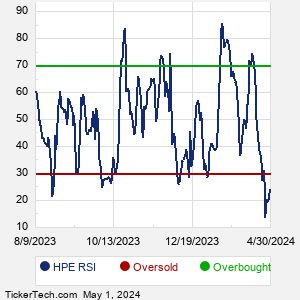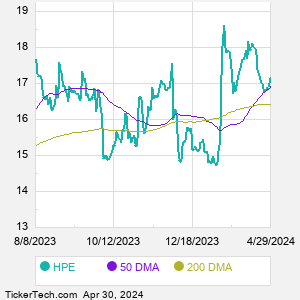Hewlett Packard Enterprise is a technology provider. Co.'s operations has six business segments: Compute, which provides both general purpose servers for multi-workload computing and workload-optimized servers; High Performance Computing and Artificial Intelligence, which provides integrated systems comprised of software and hardware; Storage, which includes primary storage product and service offerings; Intelligent Edge, which comprises of a portfolio of secure edge-to-cloud solutions operating under the Aruba brand; Financial Services, which provides flexible investment solutions; and Corporate Investments and Other, which includes the Advisory and Professional Services business.
When researching a stock like Hewlett Packard Enterprise, many investors are the most familiar with Fundamental Analysis — looking at a company's balance sheet, earnings, revenues, and what's happening in that company's underlying business. Investors who use Fundamental Analysis to identify good stocks to buy or sell can also benefit from HPE Technical Analysis to help find a good entry or exit point. Technical Analysis is blind to the fundamentals and looks only at the trading data for HPE stock — the real life supply and demand for the stock over time — and examines that data in different ways. One of these ways is called the Relative Strength Index, or RSI. This popular indicator, originally developed in the 1970's by J. Welles Wilder, looks at a 14-day moving average of a stock's gains on its up days, versus its losses on its down days. The resulting HPE RSI is a value that measures momentum, oscillating between "oversold" and "overbought" on a scale of zero to 100. A reading below 30 is viewed to be oversold, which a bullish investor could look to as a sign that the selling is in the process of exhausting itself, and look for entry point opportunities. A reading above 70 is viewed to be overbought, which could indicate that a rally in progress is starting to get crowded with buyers. If the rally has been a long one, that could be a sign that a pullback is overdue. |



